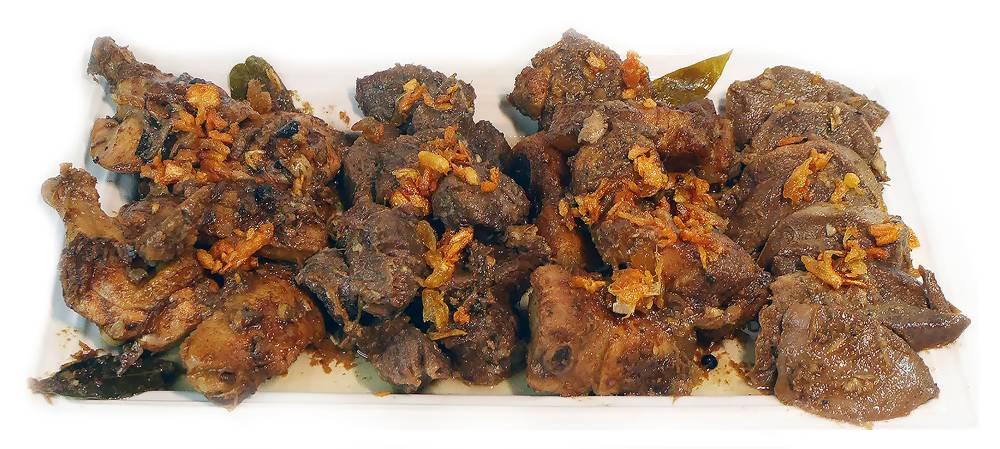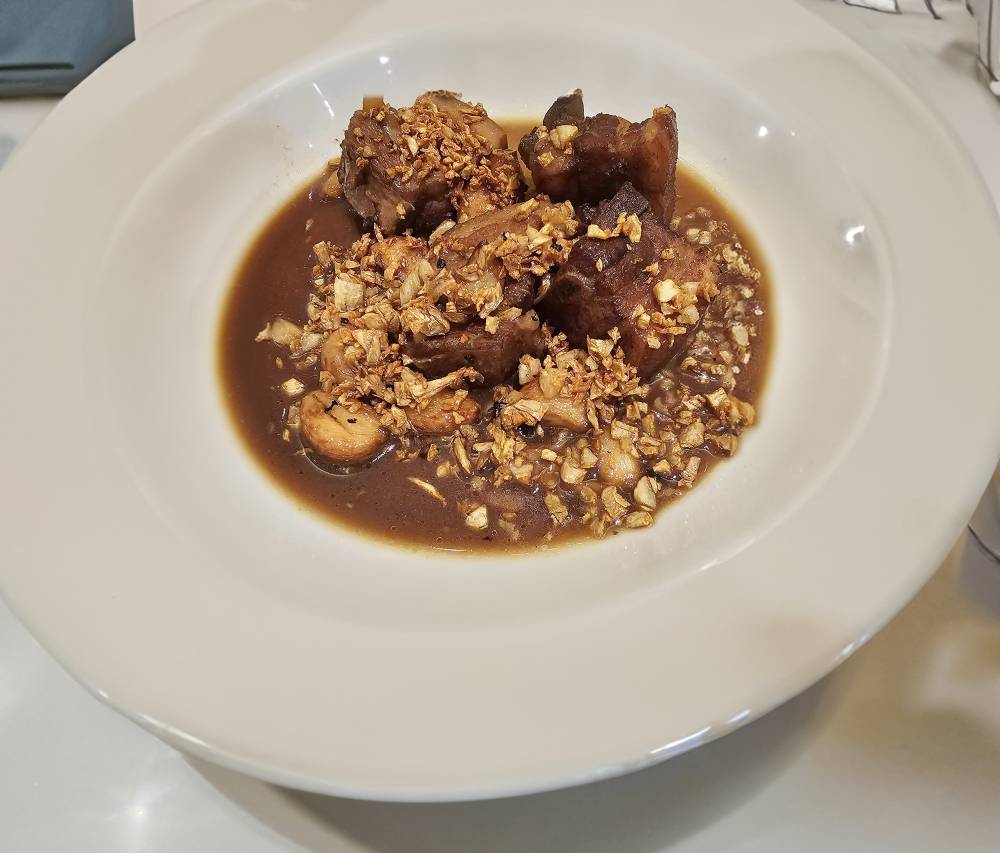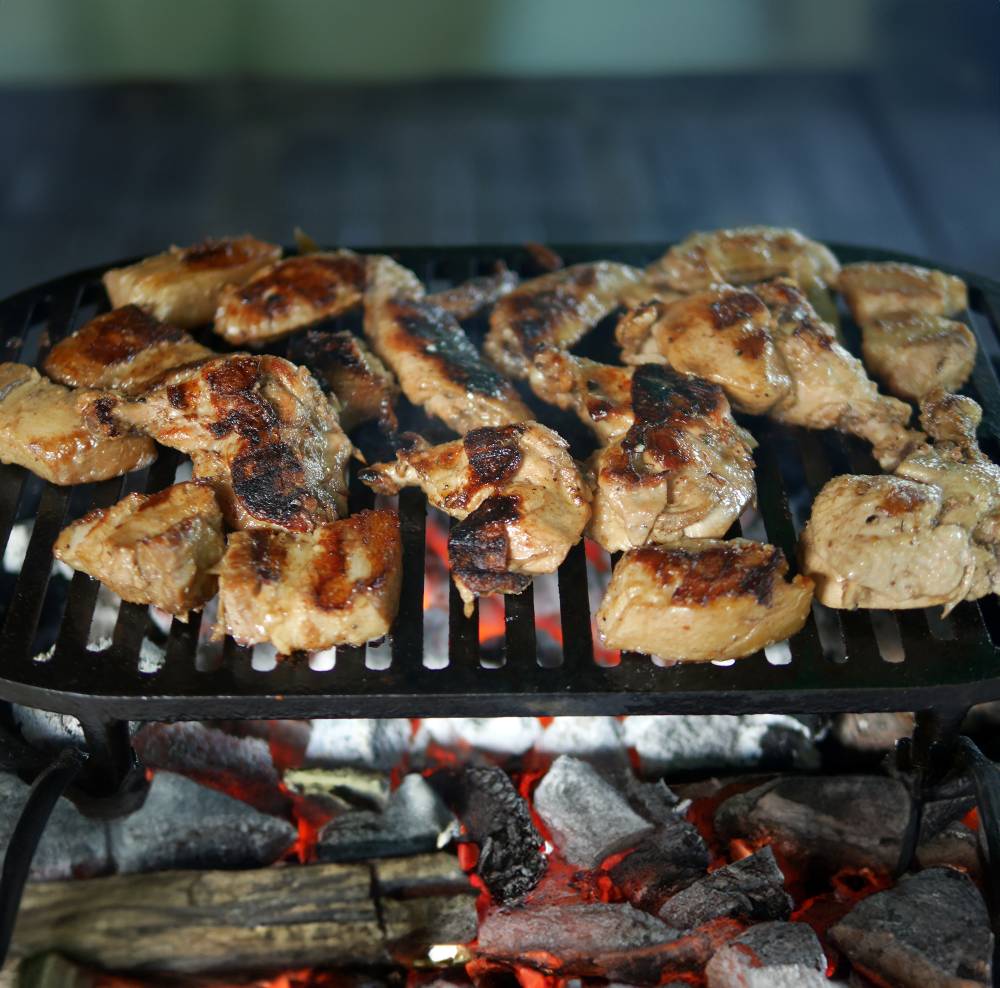Adobo all-stars: From National Artist to beauty queen

Collecting cookbooks has been a longtime pursuit of mine.
Since rekindling my love affair with our own native cuisine, Philippine-themed cookbooks capture my attention—specifically, the ones that take a deep dive into our unique cooking techniques and traditional dishes, and that contain recipes that have tales to tell and make our food culture so uniquely ours, and are thus so special.
Books by Felice Sta. Maria, Mickey Fenix, Ige Ramos and Claude Tayag always tickle my fancy.
Speaking of Claude, the second edition of his “Ultimate Adobo” book added even more recipes. The book is a compilation of adobo with their own back stories, making it such an interesting read.
Claude finds adobo everywhere! He found a fancy Adobo Chocolate Chip Cookie through Abi Balingit’s “Mayumu,” a Filipino-American dessert cookbook.
He uncovers them through vlogs. Through this book, I learned that Apl.de.ap got his stage name from Allan Pineda Lindo of Angeles, Pampanga and that you can witness him rap his way through preparing his favorite adobo with potatoes and hard-boiled eggs by watching his vlog Apl’s World.
Claude goes near and far, traveling to Greenland where he discovered whale adobo by a Visayan chef, Leetuy Dorias, who marinates whale in soy and garlic.
Claude’s book even has a chapter on Filipino adobo attaining international stardom, where personalities like Meghan Markle shared how she cooks her adobo, and how Cameron Diaz ate adobo, rice and lumpia every day.
Indeed, like us Filipinos, adobo is everywhere—which is why adobo will forever be a never-ending story.

Gibo’s adobo story
Defense Secretary Gibo Teodoro fondly recalled the adobo from their Paniqui, Tarlac, home.
It was adobo in vinegar—adobong tokak (frogs) and adobong pasdan (agachonas or snipes), the latter cooked as adobong tuyo or dry adobo.
He wrote, “We also had chicken adobo, without soy sauce. All the adobos were prepared by our cook Mang Candro, or by our caretaker, Luisa Navarro, a cousin of our grandfather.
“My own adobo changes depending on the ‘flavor of the period.’”
Teodoro’s basic adobo involves marinating the pork (essentially pork belly with skin) and chicken in vinegar, soy, garlic, some salt and whole black pepper, preferably overnight. The “flavor of the period” may be adding mirin (sweet Japanese cooking rice wine), not so much to add sweetness but to cut the sharpness of the vinegar.
More sugar is added if he feels like having a sweetish humba-like sauce.
After marinating, the meats are seared. To it, water and some mirin are added. Bring the meats to a gentle simmer.
When the meat is tender, separate it from the sauce to cool.
Meanwhile, fry copious amounts of whole garlic. Deep-fry the meats until brown on the outside but moist on the inside. Put the meat and sauce back in the pot for a final simmer. Cap with garlic.
Teodoro confided that he gets hungry and loves to cook after a stressful day.

BenCab’s CPA
National Artist for Visual Arts Benedicto Cabrera, aka BenCab, prefers his adobo grilled.
When BenCab first moved to London in 1969, he was the designated home cook, being a work-from-home artist. He labored to replicate his mother’s chicken and pork adobo (CPA).
His parents hail from Guagua and Sasmuan, Pampanga. His mom’s adobo had toyo (soy sauce) and coarsely mashed chicken liver mixed into the sauce. He confessed that he didn’t know at that time that adding liver was typical of a Kapampangan adobo.
“It was the only adobo I knew, and it was the best adobo because my mother cooked it,” said BenCab.The artist added an extra step to his favorite adobo, grilling the chicken for that smoky flavor from the charred edges of the meats.
Here is how he does it.
Chicken wings (his favorite chicken part), chicken liver, and liempo (fatty pork belly with skin is a must for the linamnam) are marinated with vinegar, toyo, whole black peppercorns and lots of crushed garlic. Feel free to adjust quantities.
BenCab cooks his by feel.
The following day, put the marinated meats in a pot with a little water. Simmer over low fire until tender.
Then, separate meats from sauce. Grill meats over a charcoal until lightly charred, basting it with some of the adobo sauce.
The chicken livers are mashed with a fork coarsely, then incorporated with the sauce and cooked until its a gravy consistency. The grilled meats may be served with the sauce on the side, or coated in it before serving.

Gemma’s way
Then there’s 1964 Miss International Gemma Cruz Araneta’s adobo. She is the daughter of the writer Carmen Guerrero Nakpil, and a great-granddaughter of Maria Rizal Cruz, Dr. José Rizal’s sister.The “Cruz Adobo” comes with a very interesting story, one I believe should be reserved for those who acquire a copy of the book.This, however, is a glimpse of the Cruz adobo with a tale as juicy to match.
Here is the list of ingredients as told to Alexandra Faustmann by Manang Pining (Josefina R. Jereza), a longtime family cook: four kinds of meat like lengua (pork or beef tongue), liempo/pork belly, chicken (whole or preferred parts) and beef punta y pecho (brisket). Meats can be 1:1 or in any combination desired. Marinade is white vinegar, soy sauce, crushed garlic and ground black pepper. Chicken or pork liver is added if desired, probably a fourth in quantity of total meat amount.
There are three versions of it:
Lengua take the longest to soften. Put those that soften fast, last. Remove liver when cooked. Grind/mash with a bit of water to loosen and add back to sauce for more simmering.
1. Manang Pining’s version: Brown everything, then marinate for at least an hour. Then simmer until desired doneness of meat, over low to medium heat.
2. Lola Pina’s version: Simmer everything together and then fry.
3. Gemma’s way: Adobo was a staple when Gemma lived in Mexico City (1976–1991). She would cook the Cruz adobo for her kids, Fatima and Leon. Her version is without lengua, lots of crushed garlic, laurel leaves, black peppercorns, salt to taste, local vinegar. Definitely devoid of toyo. Liver is also added to thicken the sauce. The procedure she follows is Manang Pining’s.
The “Ultimate Adobo” second edition book is available in National Book Stores nationwide.
Follow @iamreggieaspiras on Instagram and Facebook; reggieaspiras.com





















